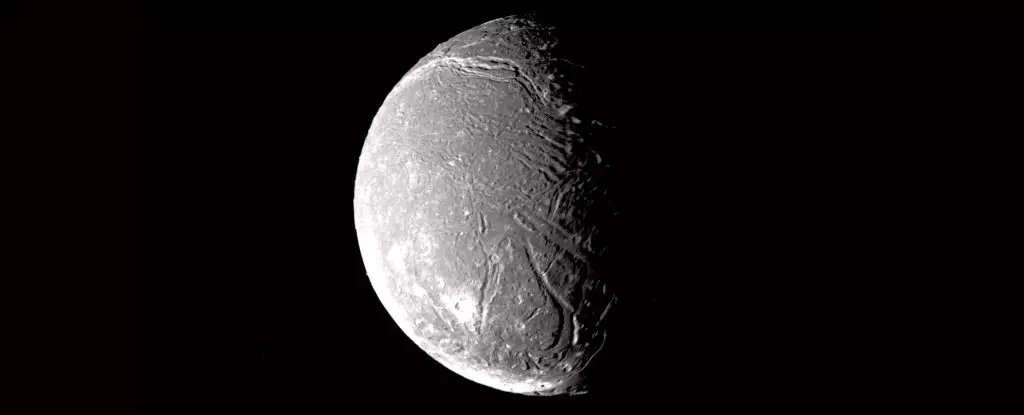As we delve into the myriad wonders of our Solar System, it becomes clear that some of its most intriguing features lie hidden beneath layers of ice and rock. Among these celestial bodies, Ariel, one of the moons of Uranus, captures the interest of planetary scientists due to its complex geological features and the tantalizing possibility of subsurface oceans. Recent studies bring to light the potential for these hidden oceans to provide clues about the moon’s geological history and its internal processes.
Ariel continuously intrigues researchers with its impressive network of deep chasms, which appear to be a key to understanding its mysterious geological past. These grooves, believed to be some of the youngest geological features on the moon, are marked by parallel patterns and unusual textures that suggest a dynamic history of development. Current theories propose that these markings may result from a combination of tectonic activity and volcanic processes—a hypothesis that underscores the moon’s geologically active nature.
Indeed, the importance of studying these chasms cannot be understated. They represent not just mere surface scars; they may be pathways through which materials from Ariel’s interior make their way to the surface. The presence of carbon dioxide ice along these fissures raises questions about the moon’s internal chemistry and the processes that have taken place beneath its icy exterior.
Recent findings suggest that a dynamic process akin to “spreading”—analogous to what occurs along volcanic ridges on Earth—could be a fundamental mechanism shaping Ariel. The theory posits that warmer materials could rise from Ariel’s interior, splitting the crust and subsequently filling the gaps. This fascinating concept helps to explain the parallel grooves observed in the chasms; as materials accumulated over time, they could have formed the distinct patterns that characterize the moon’s surface today.
Moreover, by employing innovative modeling techniques, researchers have found that when matched, the edges of Ariel’s chasms fit together seamlessly. This close matchup provides compelling evidence that these grooves are not merely the result of random geological events; instead, they reflect a more profound and systematic internal mechanism. Such insights hint at the possibility that Ariel’s geological features are far more indicative of subsurface activity than once thought.
Adding another layer to Ariel’s story is the phenomenon of orbital resonance, a gravitational interaction between the moon and its neighboring satellites. This interaction can induce internal heating, creating conditions conducive to the formation of liquid water beneath the surface. Recent observations from the James Webb Space Telescope (JWST) bolster the idea that Ariel could be home to a subsurface ocean, possibly even one that facilitates complex chemical interactions leading to the deposition of carbon-bearing materials observed on its surface.
Understanding how this orbital locking can lead to internal heating of moons like Ariel opens new avenues of inquiry. If the surface features are indeed influenced by gravitational forces, they could signify not only a history of geological evolution but also the potential for habitability in some form.
Despite the available data, many questions remain unanswered. Scientists have yet to determine whether the carbon dioxide ices found on Ariel’s surface are directly linked to the features within the chasms. Future exploration missions to the Uranian system could help reveal the depth and extent of any subsurface oceans, shedding light on the possibility of life beyond Earth.
As the scientific community advocates for renewed exploration efforts, Ariels’s geological puzzles stand out as prime targets for investigation. This moon holds secrets that may yet illuminate our understanding of icy bodies throughout the Solar System. The call for space agencies to prioritize missions to Uranus and its intriguing moons could unlock new frontiers in planetary science.
Ariel serves as a microcosm of the larger mysteries engulfing our Solar System, a reminder that there’s so much more to discover. As research progresses, the interplay between its chasms, potential subsurface oceans, and geological activity offers a treasure trove of insights into not just Ariel, but the very nature of celestial bodies forming within our cosmic neighborhood. With future missions on the horizon, Ariel’s secrets await revelation, tantalizingly hinting at the universe’s continuing capacity to surprise and inspire.

